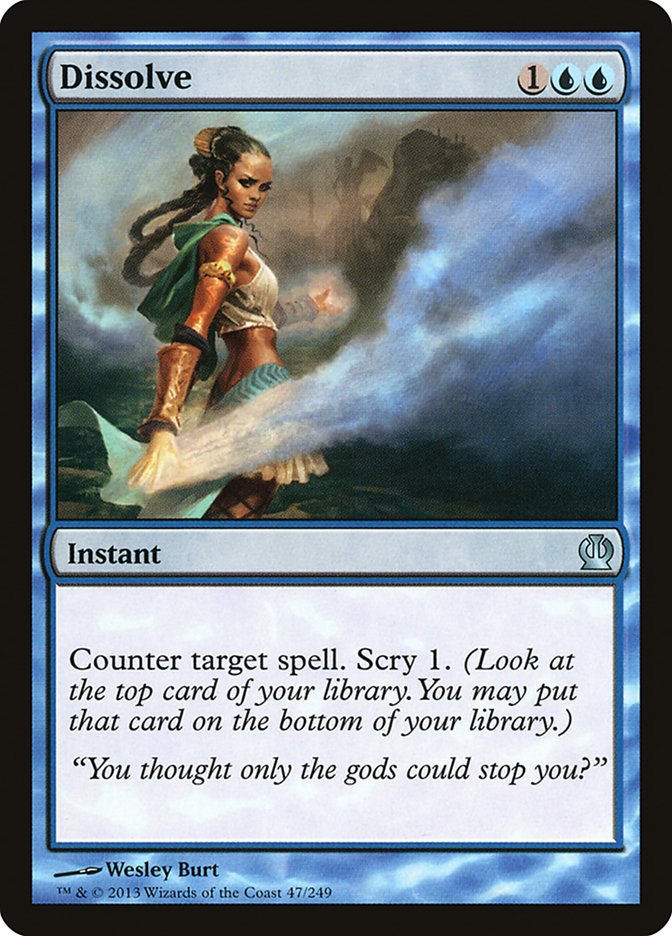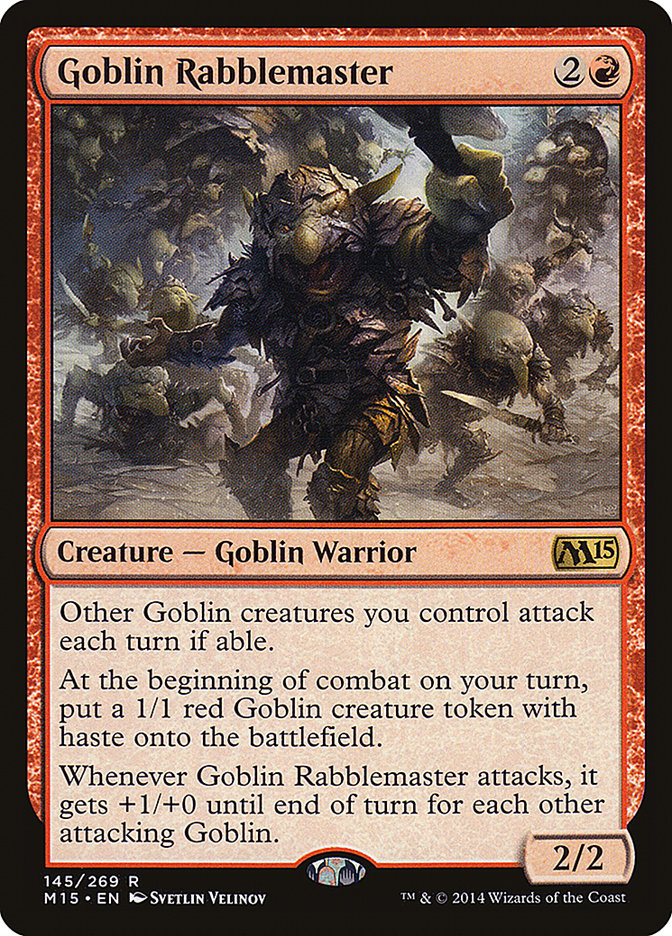It is my objective today to effectively convey some ideas related to Magic theory. I’ve noticed lately that many writers (including myself) have cited the
importance of the concept of mana efficiency, but haven’t properly defined or given multi-faceted examples to try and accommodate the incredibly subjective
and dynamic nature of games of Magic. That being said, I want to stress the point: There are no hard and fast rules, and that very fact is what makes the
game both beautiful and complicated. Hopefully we can all learn something, and if not, I’m absolved of all guilt since this article is being posted on my
birthday.
What is being mana efficient? Why should you strive to play Magic in this manner?
In the most basic terms, over the average match of Magic, a player will have access to X amount of mana for use in those games divided amongst Y number of
turns. The player who is able to best utilize his/her mana and play all of their spells will frequently win more games than someone who doesn’t. Simply:
One should default to playing the combination of spells in their hand that uses all of their mana every single turn until they no longer can.
Once someone decides they are interested in competitive Magic and seeking self-improvement, the most impactful piece of advice I can give them is to pay
close attention to games in which they lose with spells still in their hand. If they had an opportunity to cast a creature or play a removal spell and
chose not to, why didn’t they? Their logic may make sense, or they may have in fact made the correct play, but taking an introspective look at games where
they chose not to be efficient and adjusting their stance in either the matchup or the way they approach the game in general may be the first step to
improving their win rate.
The “My Spells are Worth More” Fallacy
When watching SCG Portland for my article two weeks ago, I noticed several incidents
where players were unwilling to play their spells for what I perceived as a lack of desire to trade their card for their opponent’s, even when it was the
correct play. This happens most frequently in Limited, where it doesn’t “feel good” to trade a premium removal spell for a generic creature, only for the
player to end up killing that creature anyways after it has dealt eight or so damage and become a real threat! Even worse is when that need to cast the
removal spell later in the game impedes the player from deploying the rest of their hand.
I suspect there are a few major culprits for this line of thinking. One is that most Magic players grew up ingrained with the concept that card advantage
is king and this idea bleeds into how they evaluate or assign value to their spells. Sometimes this holds true, (Sphinx’s Revelation) but in reality, the
average Magic card printed is so powerful now that it isn’t necessary to create specific roles for your spells; what’s more important is just casting them
so parity can be maintained before you play your own powerful cards.
Second: We are quickly taught that our life total is a resource. This is 100% true, but it is a resource that can be leveraged the entirety of the game
until someone hits zero. Blocking, countering, or killing a creature on turn 2 will allow a player to utilize their mana in another manner while under
pressure later in the game instead of being forced into a specific action because their life total is diminishing. As I alluded to a moment ago, if the
answer to the question “Will I have to deal with this card eventually anyways?” is yes, then it is in your best interest to use your resources as soon as
possible.
The Color Blue and Creating Efficient Exchanges
On the opposite end of the spectrum, the ability to deny your opponent the ability to deploy their spells in an efficient manner is also incredibly
valuable. This concept is most often associated with playing against blue decks and their countermagic, but it can also be applied to any opponent with
reactive elements.
Every time your opponent leaves up 1UU in Standard for Dissolve but isn’t able to counter a spell before he/she untaps, you’ve denied them mana efficiency.
Similarly, whenever your opponent leaves up UUUBB with three cards in their graveyard and you force them to counter your spell with Dissolve, you’ve denied
them the opportunity to cast Dig Through Time and maximize their resources. Correctly pacing your spells against your opponent’s when they leave up mana to
be reactive comes with practice and experience with the decks in a specific metagame, but this is an important skill to cultivate. Knowing how to both
efficiently deploy your cards and simultaneously make it difficult for your opponent to do so is one of the best ways to “out play” people, not making
outrageous bluffs or using factors outside of the game to “level” folks.
I should stress, however, the previous paragraph is not a defense for being inefficient. This patient approach to games of Magic is largely atypical and
often only works when a matchup is two decks relatively close to each other on the spectrum of Aggro – Midrange – Control. Most of the time, especially
when under pressure, just cast your spells!
Initiative
One of the most powerful cards in Standard is Goblin Rabblemaster. It is also one of the most highly debatable cards when it comes to his power level in
sideboard games depending on whether you are on the play or the draw. Recently, I had a conversation regarding a player who had concluded that Rabblemaster
was actually superior on the draw in mirror matches but couldn’t articulate why. The answer is that the game was being funneled into a play pattern that
granted him initiative in the game.
On the second turn, on the draw, he is free to use his mana playing Lightning Strike to kill his opponent’s Rabblemaster before it generates a token. He
can then untap and play his own Rabblemaster, netting a damage and board presence. He is both able to use his mana efficiently for two turns, then force
his opponent to be reactive on the fourth turn when it is unlikely he can use all of his resources while still being able to keep a 1/1 in play.
Many players are aware that taking advantage of this sequence, including holding back their own Rabblemaster on turn 3 when they are on the play, is
incredibly valuable, but the ability to understand what is happening and how to naturally place yourself in more of these scenarios is imperative for
getting an edge in particular exchanges.
Another frequent example is the Abzan Aggro mirror. When an opponent has played a Siege Rhino on their fourth turn and you now have the option of
responding with either your own Rhino or using a removal spell on theirs, what do you do? The immediately efficient answer is to use all four of your
available mana and match their Rhino, but is that actually correct?
If they just untap and attack, it is difficult to block for fear of Abzan Charm making their Rhino huge and eating yours. Even if they simply have a
generic removal spell, if you do decide to block they can then choose to kill your copy of Siege Rhino and trample over for four damage. You’re then likely
forced to kill their creature the following turn anyways, which both creates an inefficient turn 5, and you’ve lost four more life in the exchange! This
isn’t even factoring in the prevalence of Wingmate Roc and allowing your opponent to trigger raid.
By allowing your opponent to untap first with their Rhino, you are forced into a reactive stance and they now have initiative. If instead you simply Hero’s
Downfall their Siege Rhino and pass, both players are once again at parity.
Back to the color blue, what is it exactly that makes Esper Dragons so powerful? If you answered Dragonlord Ojutai, you’re by no means wrong, but rather
than the card itself, it is more so the type of game he allows the deck to play. As long as Dragonlord Ojutai remains in play, Esper Dragons has
initiative. Their opponent can either choose to be massively inefficient for the rest of the game by holding up mana to deter attacks by Ojutai, or they
can choose to try to combat a huge flying clock that keeps feeding its owner reactive spells. Esper Dragons gets to play both spectrums of the game,
proactive and reactive, incredibly well at a favorable pace and as a result is extremely difficult to play optimally against.
In Summation
Once we get used to the concept of playing our spells in an efficient manner, adjustments can be made to play patterns to optimize them based on other
factors. Play testing is especially important for discovering common sequences of turns present in formats to allow players to lead their opponents into
inefficient exchanges. Most of all, if you’re being attacked, cast your spells!


